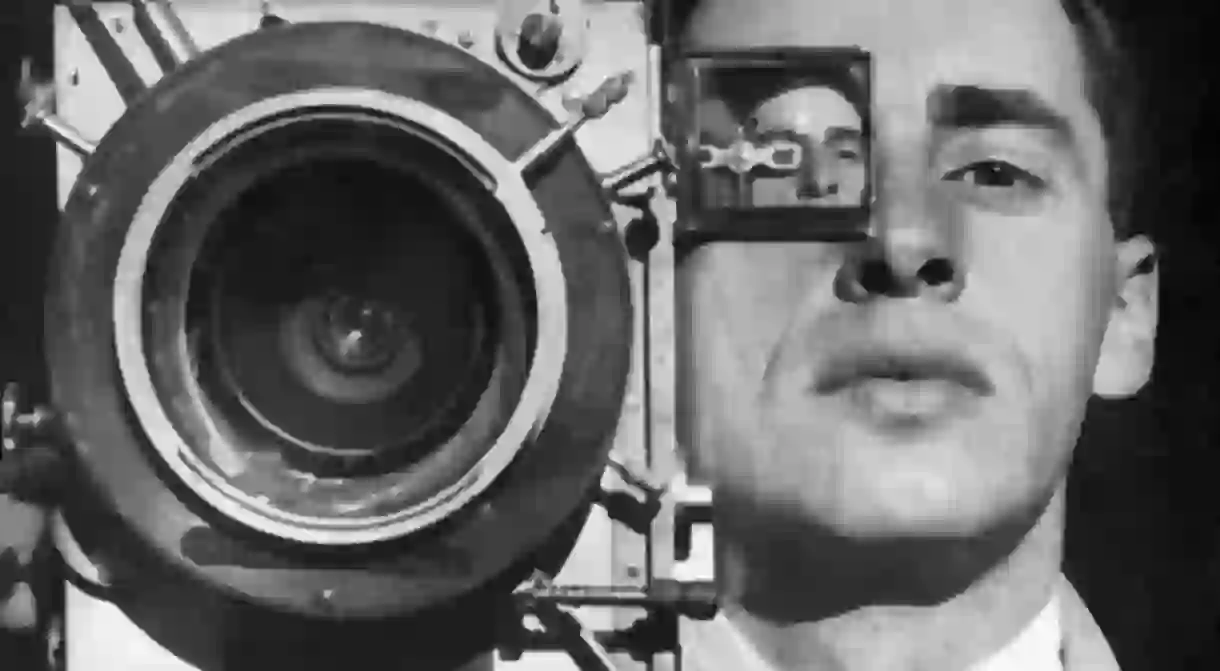How 'Man with a Movie Camera' Changed Documentary Filmmaking

The silent, avant-garde documentary Man With a Movie Camera pushed the boundaries of cinematic visual language and opened up the world of filmmaking. At a time when Soviet film was instrumental in communicating State propaganda, Dziga Vertov, the film’s director, experimented with editing techniques and stylistic decisions as a way to rid cinema of its bourgeois elements. Made in 1929, the film is now universally revered, even making it into the BFI’s top ten films of all time because of its influence on the cinema that followed.
Did you know – Culture Trip now does bookable, small-group trips? Pick from authentic, immersive Epic Trips, compact and action-packed Mini Trips and sparkling, expansive Sailing Trips.
The film emerged out of the Constructivist art movement of the early 20th century. This school of thought believed art should reflect the modern, industrialised world and should serve the greater, collective good. As a movement that embraced the future, Constructivism welcomed technology and pushed design and artistic boundaries. Reflecting these Constructivist tenets, Man With a Movie Camera used the camera (a new piece of technology at the time) to create an image of the Soviet city on screen and expanded film language by experimenting with visual storytelling, narrative construction and cinematic style conventions.

The filmmakers behind Man With a Movie Camera, Dziga Vertov, his wife Elisaveta Svilova and his brother Mikhail Kaufman (who edited and shot the film, respectively), concerned themselves with the idea of cinematic truth. Vertov believed fictional cinema was elitist and unsympathetic to the Communist regime because it created a fake reality. Consequently, he rejected the elements and tools that were used to create it.

Vertov wrote several manifestos on documentary ideology. They outlined his rejection of cinematic fiction and all of the contributing facets. This included studios, narrative devices such as plot and character, celebrities and actors. Instead, he, along with his collaborators Svilova and Kaufman, advocated non-fiction film and saw the camera as the piece of technology that could interpret the surrounding world.
Man With a Movie Camera is a product of these beliefs. The prologue spells out that the film ‘is an experiment in cinematic communication of real events’, and any overly staged or rehearsed elements (what Vertov refers to as theatre), as well as story, have been removed. The prologue then fades into audience members taking their seats in a cinema. Movie-goers shuffle in and wait for a movie to start.
The lights dim, and the film within the film commences. It reveals a Soviet city awakening: a woman wakes up and readies herself for the day, machine cogs turn, a woman gives birth. Daily occurrences are edited together in a whirlwind of activity so that the unnamed Soviet city and its inhabitants become entwined.
This frenzied portrayal of a-day-in-the-life is made through repeatedly using a dizzying number of effects, which are all commonplace now. At the time, however, the decision to use pacing, shot sequencing, and a deluge of special effects such as jump cuts, split screen and double exposure to reflect the pace of industrialised Soviet life was trailblazing.

In perhaps his most groundbreaking move, Vertov reveals the mechanisms of filmmaking from the very beginning of the movie. He reveals the audience members at the film’s start. Then, images of Kaufman and Svilova filming and editing the film are dispersed between shots of the daily goings-on. In so doing, he reveals a truth about documentary and cinema: what is presented on screen is a constructed reality.
Through this self-reflexiveness, Vertov removed the idea of objectivity in documentary-making. The audience is constantly reminded that what they are seeing is a deeply impressionistic view of the world that is wrapped up in personal, political beliefs. And although the film was a product of an art movement that emerged from the Soviet Union, Man With a Movie Camera‘s influence is more visible outside the former Eastern Bloc.
Most significantly, the revolutionary years of the ’60s saw Vertov and Man With a Movie Camera influence French New Wave cinema and the likes of Chris Marker, Jean-Luc Godard and Jean Rouch. In particular, a sub-movement called Cinéma Verité (translating to Film Truth) continued to specifically examine cinematic truth and acknowledge the filmmaker’s role in constructing documentaries. It focussed on presented people in everyday situations, using naturalistic dialogue and action, and, just like Man With a Movie Camera, Cinéma Verité films were always conscious of the filmmaker’s presence. In addition to this, the Dziga Vertov Group, founded by Jean-Luc Godard and Jean-Pierre Gorin, continued to create politically charged films and to deconstruct filmmaking.
Made before its time, Man With A Movie Camera was initially poorly received. Now, however, its stylistic and conceptual influence is almost ubiquitous across documentary and film genres.













